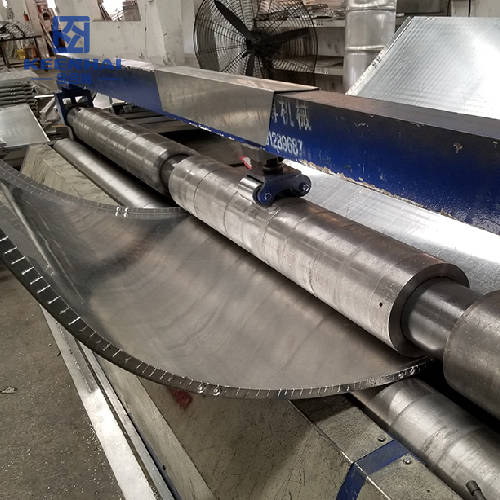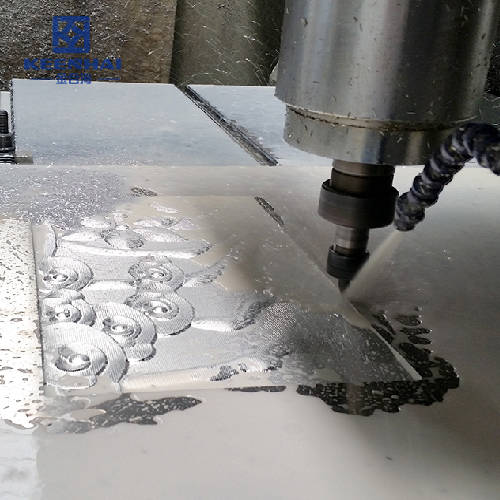If you’re wondering about the difference between 不锈钢 和 不锈钢, the short answer is simple: they are essentially the same material, but the grade and application make all the difference. Inox usually refers to stainless steel in general, while the choice between types like 304 and 316 affects cost, rust resistance, and long-term durability. For kitchens, indoor projects, and areas without harsh exposure, 304 不锈钢 is often enough. In marine or outdoor environments, 316 is the smarter option because of its superior corrosion resistance. This guide will break down cost, durability, and real-life uses so you can pick the right grade for your project in 2025.
什么是不锈钢材质?
不锈钢材料的定义
期限 不锈钢 源自法语单词 防锈的, which translates to “stainless.” Inox material is another name for stainless steel, commonly used in Europe and certain industries like kitchenware and architecture. Thanks to its unique chemical composition, the term emphasizes the material’s ability to resist rust and staining.
Inox 材料的关键特性
Inox 材料以其出色的耐腐蚀性而闻名,这归功于其铬含量(通常高于 10.5%)。这会在表面形成一层钝化层,防止氧化。它还因其机械强度、耐用性和美观的抛光效果而受到重视,使其成为功能性和装饰性应用的首选。
What Is Inox and Stainless Steel?
不锈钢, short for acier inoxydable, is a high-chromium 不锈钢 alloy that offers superior resistance to rust and staining. It is widely used in high-end applications like kitchen equipment, jewelry, and marine products.
不锈钢, in general, is a broad category of alloys that includes Inox and other grades. It contains a minimum of 10.5% chromium to prevent corrosion but may vary in nickel, molybdenum, and other alloy content depending on the grade.
| 特征 | 不锈钢 | 不锈钢 |
|---|---|---|
| Chromium Content | Typically 18%+ | 10.5%-18% (varies by grade) |
| 耐腐蚀 | Very high | High |
| Common Uses | Kitchen equipment, jewelry | Construction, automotive, appliances |
All Inox is stainless steel, but not all stainless steel qualifies as Inox. This distinction is important when choosing materials for harsh environments.
Durability and Corrosion Resistance
-
不锈钢: Extremely resistant to oxidation, ideal for outdoor or high-humidity environments. It rarely rusts and maintains a polished finish over time. In marine environments, Inox 316 is often preferred for its molybdenum content, which improves corrosion resistance against saltwater.
-
Standard Stainless Steel: Durable and corrosion-resistant, but some grades like 304 may show minor surface rust if not maintained. For indoor projects, 304 stainless steel is usually sufficient.
Example: A stainless steel kitchen sink made of 304 grade may last 10–15 years with proper care, while a 316 Inox sink in a coastal home can easily last 20+ years without visible corrosion.

不锈钢材料与不锈钢的比较
术语差异
Inox 材料和不锈钢之间的主要区别之一在于术语。Inox 材料是欧洲和特定行业更常用的术语,而不锈钢是全球术语。尽管命名法不同,但它们指的是同一种材料。
性能相似性
无论您称其为 Inox 材料还是不锈钢,该材料的性能始终保持一致。这两个术语都描述了一种耐腐蚀、耐用的合金,在建筑、家居用品和工业领域具有类似的应用。
感知的变化
The difference in naming can create a perception that they are distinct materials. For example, “Inox” may be seen as a more premium brand in certain regions due to its association with European quality. In reality, the distinction is purely semantic.
Cost Comparison
Material cost is often the first consideration for many projects.
| 材料 | Average Price per Kg (USD) | Notes |
|---|---|---|
| 不锈钢 | 5–8 | Premium, corrosion-resistant |
| 不锈钢 | 3–6 | Cost-effective, versatile |
-
不锈钢: Higher upfront cost due to chromium and alloy content, but lower maintenance and longer lifespan often justify the price.
-
不锈钢: More budget-friendly and versatile for most indoor and non-extreme applications.
Real-world ROI: For outdoor stair rails or coastal railings, choosing Inox 316 over standard stainless steel may increase initial cost by 30–50%, but it avoids rust damage and replacement costs over a 15-year span.
主要应用
厨房和家居用品
不锈钢材料是厨具品质的代名词。不锈钢具有耐腐蚀、易清洁和抛光美观等特点,是制作锅、平底锅、餐具和水槽的首选。不锈钢表面无反应,因此可以安全地用于食物制备。
施工和设计
不锈钢的强度和耐候性使其成为建筑中的必备材料。它用于住宅和商业建筑的结构框架、栏杆、外墙和装饰元素。不锈钢或 Inox 材料的时尚现代外观增强了建筑设计感。
工业和汽车用途
在工业厂房或汽车制造等苛刻的环境中,不锈钢因其耐用性和耐受极端条件的能力而出类拔萃。它通常用于排气系统、化学罐和船舶设备。
Different Grades of Inox and Stainless Steel
Understanding grades can help fine-tune your choice:
| Grade | Typical Use | Key Advantage |
|---|---|---|
| 304 | Kitchen equipment, appliances | Cost-effective, good corrosion resistance |
| 316 | Marine, outdoor furniture | High corrosion resistance, ideal for harsh environments |
| 430 | Automotive trim, indoor appliances | Magnetic, budget-friendly |
For outdoor, coastal, or high-moisture areas, Inox 316 or equivalent is the safest choice.
Maintenance and Lifespan
-
不锈钢: Low maintenance. Occasional cleaning with mild detergent keeps it shiny. Extremely resistant to corrosion, scratches, and stains.
-
不锈钢: Requires regular cleaning to prevent surface rust, especially in high-humidity or coastal areas. Abrasive cleaners may damage the protective chromium layer.
Example: A 316 Inox outdoor railing may only need yearly cleaning, while a 304 stainless steel railing might require quarterly maintenance in the same environment.

Common Misconceptions
-
All stainless steel is Inox – Incorrect. Only certain high-chromium stainless steels qualify as Inox.
-
Higher price always means better quality – Not necessarily. Choosing the right grade for your environment is more important.
-
Maintenance is the same for all grades – Inox generally requires less care, while standard stainless steel may need frequent cleaning to prevent rust.
结论
When deciding between 不锈钢 和 不锈钢, consider:
-
Environment: Coastal, marine, or humid areas favor Inox 316.
-
Budget: Stainless steel is sufficient for indoor, less demanding applications.
-
长寿: Inox offers longer lifespan and lower long-term maintenance.
By understanding your project requirements, you can choose the material that provides the best combination of durability, performance, and value.
If you’re ready to pick the finish that locks in color and cuts long-term upkeep, see our PVD stainless steel sheet guide.







